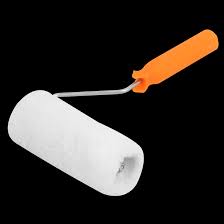
The Versatility of Polyurethane Resin Adhesive
Polyurethane resin adhesive is a versatile and widely-used adhesive in various industries due to its exceptional bonding properties and durability. This type of adhesive is favored for its ability to bond different materials together effectively, making it a popular choice for applications ranging from woodworking to automotive manufacturing.
Key Features of Polyurethane Resin Adhesive:
- Strong Bonding Strength: Polyurethane resin adhesive forms strong bonds that are resistant to heat, water, and chemicals, making it suitable for demanding applications.
- Flexibility: This adhesive can accommodate slight movements or expansions in bonded materials without compromising the bond integrity.
- Durability: Polyurethane resin adhesive offers long-lasting adhesion, ensuring the longevity of bonded products or structures.
- Wide Compatibility: It can bond a variety of materials such as wood, metal, plastic, glass, and composite materials.
Applications of Polyurethane Resin Adhesive:
Polyurethane resin adhesive finds extensive use in the following industries:
- Woodworking: It is commonly used for bonding wooden furniture, cabinets, flooring, and laminates.
- Automotive: In the automotive industry, polyurethane resin adhesive is employed for bonding vehicle components and structures.
- Construction: It plays a crucial role in bonding building materials like insulation panels, concrete elements, and facade systems.
- Marine and Aerospace: Due to its resistance to water and chemicals, polyurethane resin adhesive is utilized in marine and aerospace applications for bonding components exposed to harsh environments.
Tips for Using Polyurethane Resin Adhesive Effectively:
- Clean Surfaces Thoroughly: Ensure that surfaces to be bonded are clean and free from dust or grease for optimal adhesion.
- Adequate Clamping Pressure: Apply sufficient pressure during bonding and use clamps or fixtures to hold the parts together until the adhesive cures completely.
- Curing Time and Conditions: Follow manufacturer’s instructions regarding curing time and environmental conditions (temperature, humidity) for best results.
In conclusion, polyurethane resin adhesive stands out as a reliable choice for various bonding applications due to its strength, durability, flexibility, and wide compatibility with different materials. Whether in woodworking projects or industrial manufacturing processes, this versatile adhesive continues to prove its value across diverse sectors.
5 Essential Tips for Effectively Using Polyurethane Resin Adhesive
- Ensure surfaces are clean and dry before applying polyurethane resin adhesive.
- Follow manufacturer’s instructions for mixing the adhesive components in the correct ratio.
- Use proper ventilation or wear a mask when working with polyurethane resin adhesive to avoid inhaling fumes.
- Apply the adhesive evenly and avoid excessive application to prevent uneven bonding.
- Allow sufficient curing time as per instructions before subjecting the bonded materials to stress or load.
Ensure surfaces are clean and dry before applying polyurethane resin adhesive.
It is crucial to ensure that surfaces are clean and dry before applying polyurethane resin adhesive. Proper surface preparation is essential for achieving a strong and lasting bond. Any dust, dirt, or moisture present on the surfaces can interfere with the adhesive’s ability to adhere effectively. By cleaning and drying the surfaces thoroughly beforehand, you create an optimal environment for the adhesive to bond securely, enhancing the overall effectiveness of the bonding process.
Follow manufacturer’s instructions for mixing the adhesive components in the correct ratio.
It is crucial to follow the manufacturer’s instructions meticulously when mixing the components of polyurethane resin adhesive in the correct ratio. The proper ratio ensures the chemical reaction between the components occurs as intended, leading to optimal bonding strength and performance. Deviating from the recommended ratio can result in inadequate adhesion, compromised durability, or even adhesive failure. By adhering to the specified mixing instructions, users can maximize the adhesive’s effectiveness and ensure reliable bonding in their applications.
Use proper ventilation or wear a mask when working with polyurethane resin adhesive to avoid inhaling fumes.
When working with polyurethane resin adhesive, it is crucial to prioritize safety by using proper ventilation or wearing a mask to prevent inhaling fumes. Polyurethane adhesives can release volatile organic compounds (VOCs) during the curing process, which can be harmful if inhaled in high concentrations. By ensuring adequate ventilation or wearing a mask, workers can minimize their exposure to these fumes and protect their respiratory health while handling polyurethane resin adhesive.
Apply the adhesive evenly and avoid excessive application to prevent uneven bonding.
To ensure a strong and uniform bond, it is essential to apply polyurethane resin adhesive evenly and avoid excessive application. Uneven distribution of the adhesive can lead to inconsistencies in bonding strength and may result in weak spots or gaps in the bond. By applying the adhesive in a uniform manner, users can achieve a reliable and durable bond between materials, enhancing the overall quality and integrity of the bonded structure or product.
Allow sufficient curing time as per instructions before subjecting the bonded materials to stress or load.
It is crucial to allow sufficient curing time as per the manufacturer’s instructions before subjecting the bonded materials to stress or load when using polyurethane resin adhesive. Proper curing ensures that the adhesive reaches its maximum strength and durability, enhancing the longevity of the bond. Rushing this process may compromise the integrity of the bond and lead to premature failure. By following recommended curing times diligently, users can ensure that their bonded materials withstand stress and load effectively, resulting in reliable and long-lasting bonds.
